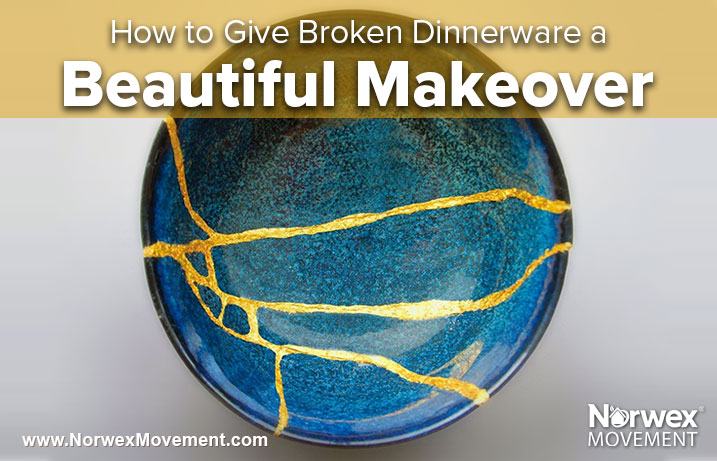

In Japanese, it means “Golden Rejoining,” and the ancient art of kintsugi is all about highlighting—rather than hiding—an object’s flaws. In the process, broken pots, vases, plates and bowls become beautiful instead of unsightly. This is a prominent theme in the Japanese philosophy of wabi-sabi, which is all about acknowledging flaws, embracing imperfections and revering authenticity. Want to give it a try? Visit MarthatStewart.com to learn more.
Resources:
Beautiful recovery of broken things. However I’m not sure I’d manage to get it looking as good as the above.
When I think of flaws and beauty, I think of people. I love to see children grow into their “flaws” to use them into something wonderful. Like the “flawed” extremely strong-willed child who as she grows, fights the temptation of negative peer-pressure and chooses to do right. Who matures into driven adult who uses her determination and persistence who never gives up when life gets hard. Maybe this strong-willed child will save someone’s life one day because of their innate refusal to give up. Or, when a kiddo who struggles to learn to read, uses his experience and understanding to become a teacher, or creates an organization to helps other struggling children learn to read. All of us are flawed, but when we can turn that flaw into something amazing, to me, it becomes pure beauty!
Thank you Sarah. Such truth and beauty in these very words. Thank you for sharing!
I’ve not heard of this philosophy before, but I like it and am intrigued. Wabi-Sabi sounds like a good idea to embrace for our own personal growth. And as for the broken dishes, I wouldn’t mind giving it a try. It’s got to look better than some of my past repairs with glue.
I’m not sure how beautiful mine would look when finished, BUT I love the concept and am super tempted to try next time we have an “accident” with one of our dishes!
The philosophy of wabi-sabi, isn’t new to me. I have known of it for over 20 years.
I have tried to explain and correct people that it (wabi-sabi) isn’t just a hot a radish sauce.
I wish people believed me and could learn to embrace imperfections in our society.
Most just laugh at me and think I am stupid and being untrue. Still I know if societies could learn to embrace imperfection and even celebrate it how much waste would be eliminated in food alone. As well as how much happier & lighter so many hearts would be in feeling acceptance in society.
I love the idea, but from a practical standpoint I’m not sure I’d be confident in using my broken (and repaired) dinnerware to actually eat from. Kintsugi is an exacting process, and I love the idea of the art that comes out of it–just not sure I could make something safe to use. 🙂
I did a version of this with my yarn bowl that broke. I didn’t want to just glue it back together, so I added a touch of gold paint to accent the crack.
That’s awesome, Jennie! How did it turn out?
Love the idea!